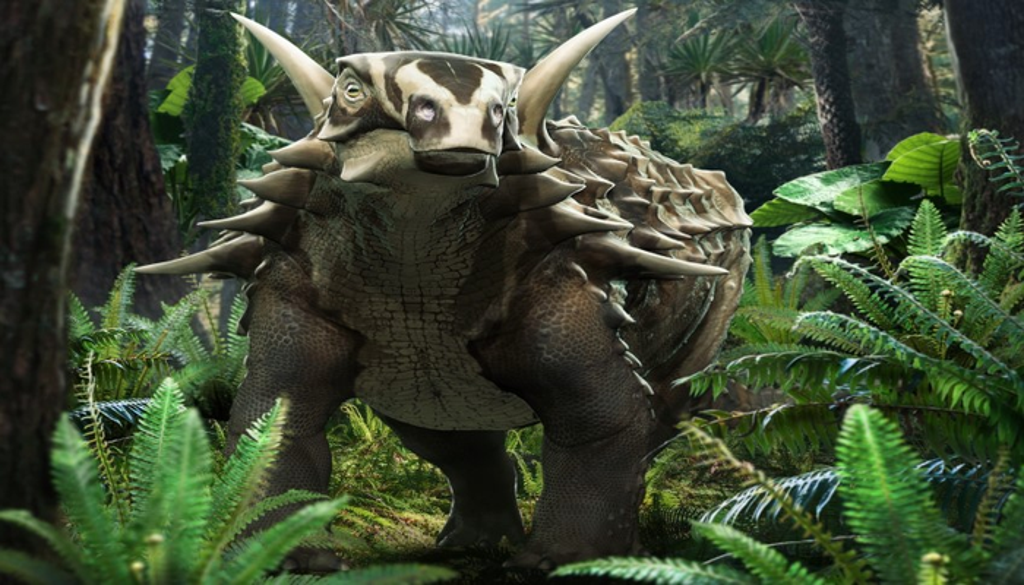Fossil reveals this armoured dinosaur was sluggish, deaf, and socially less active

Some species of nodosaurids – a group of herbivorous armoured dinosaurs whose bodies were cluttered with bony plates and spikes – may have been sluggish, deaf, and lonesome, a new study of their fossil braincase has revealed.
While many dinosaurs likely lived in groups, the research published in the journal Scientific Reports earlier this month has suggested that some nodosaurids may have preferred to live a socially less active life due to their inferior sense of hearing.
The study assessed the fossil braincase of an Austrian dinosaur with a high-resolution computer tomograph scan to produce a digital three-dimensional cast.
Analysis of these rare fossils, which housed the brain and other neurosensory tissues, can provide insights into the lifestyle of a given animal, said the researchers, including those from the University of Vienna.
Citing an example, they said understanding the inner ear structure from such braincase fossils can reveal insights about the auditory capacities and skull orientation of dinosaurs.
Researchers have also been able to make inferences on brain thermoregulation and neck mobility of dinosaurs based on an analysis of braincase fossils.
In the new research, the scientists analysed a tiny 50mm fossil braincase of a dinosaur Struthiosaurus austriacus that lived during the Late Cretaceous era 80 million years ago in modern-day Austria. The study revealed new details of the anatomy and lifestyle of S austriacus, and shed more light on its sense of equilibrium and audition.
It found that the dinosaur’s brain was similar to those of its close relatives, and particularly, its flocculus – an evolutionary old part of the brain – was small.
Since this part of the brain is vital for the fixation of the eyes during motions of the head, neck and whole body, scientists suspect this dinosaur may have had an “exceptionally sluggish lifestyle”.
The flocculus, researchers said, can be very useful if an animal was trying to target potential competitors or aggressors.
A part of the ear of S austriacus, the lagena, was found to be one of the shortest ever found in a dinosaur, suggesting it may have had problems with hearing and balance.
So they said that S austriacus, which likely grew up to 3m in length, didn’t have the brain capacity to focus and charge at potential predators due to its small flocculus, and may have relied on the plates and spikes on its heavily armoured body to fend off other animals.
“These observations agree with an animal that adapted to a comparatively inactive lifestyle with limited social interactions,” the scientists wrote in the study.
For all the latest Science News Click Here
For the latest news and updates, follow us on Google News.

